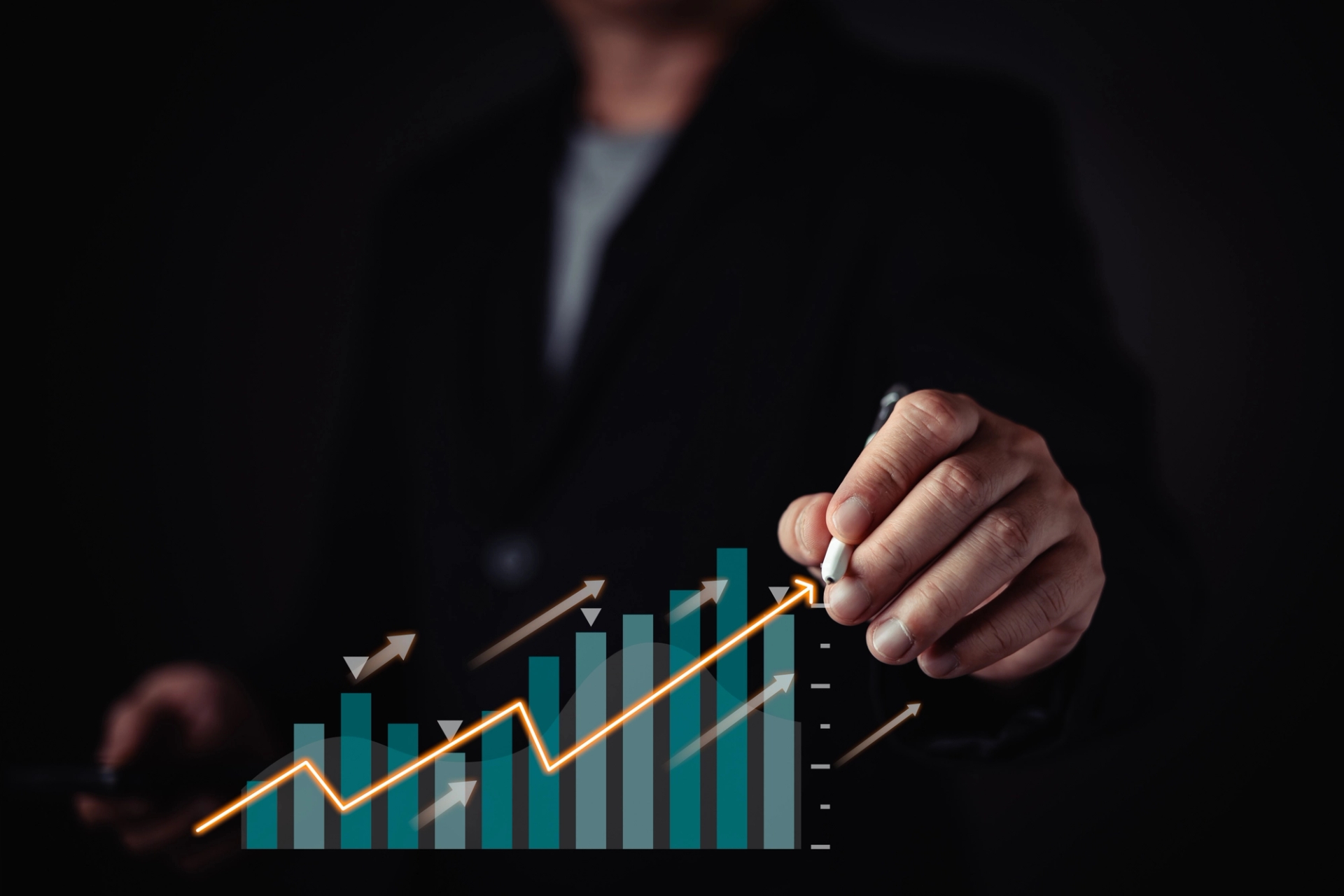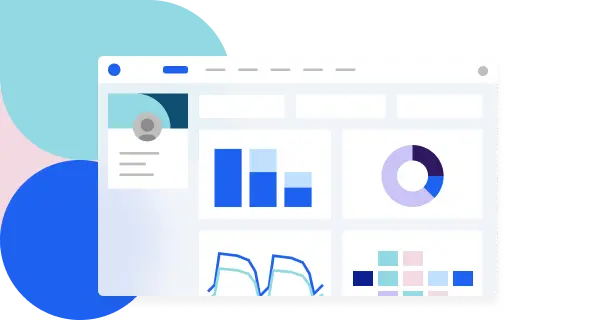How Event Data Analytics Can Help In Improving Events In 2025
Discover how event data analytics can enhance planning and execution for future events. Improve outcomes and attendees' experiences—read the article now!

Introduction: The Growing Importance of Event Data Analytics
In today's competitive landscape, event organizers can no longer rely on guesswork to deliver memorable experiences. The success of any event—whether it's a corporate conference, trade show, or virtual summit—hinges on data-driven decision making. Understanding how attendees interact with your event, from the moment they register to the post-event feedback, is crucial.
Event data analytics provides valuable insights that help optimize every aspect of the event planning process. By analyzing data, you can identify trends, improve attendee engagement, enhance marketing strategies, and ultimately improve event outcomes.
What is Event Data Analytics?
Event data analytics refers to the process of gathering and analyzing data collected during the entire event from registration to post event feedbacks to uncover actionable insights. It encompasses tracking metrics like ticket sales, attendee demographics, registration trends, session attendance data, engagement data, feedback received.
A robust event management system like Azavista’s Event Management Software offers end-to-end solutions to collect and interpret this data efficiently, helping event planners make informed decisions based on real numbers rather than assumptions.
Why Event Analytics Can Improve Event Outcomes
When you know who your attendees are, what sessions they are interested in, and how they interact with your content, you can:
- Personalize communication and experiences
- Optimize event strategies based on data
- Increase attendee satisfaction
- Drive better engagement metrics
- Identify areas for improvement early
Using registration data is the foundation for a smarter, data driven event strategy that improves outcomes at every touchpoint.

How to make most out of Event Data Analytics in Modern Event Planning
By utilizing the power of analytics, event planners can craft event strategies that are also responsive to the needs and expectations of their audience. Event data analytics isn't just a "nice-to-have" anymore—it's essential for event success.
It can help event planners:
- Forecast attendance for future events
- Understand the preferences of your target audience
- Optimize marketing strategies by analyzing engagement
- Make real-time adjustments during the event itself
- Conduct post event analysis to measure success
In short, analyzing data strengthens every phase of the event planning journey. Using event management software for this will help in saving time and increasing ROI on future events.
Key Metrics to Track for Event Success
Event planners are increasingly turning to data-driven strategies to make informed decisions that elevate their events from ordinary to extraordinary. To measure event success, you must track the right key performance indicators (KPIs). Some critical metrics include:
- Registration rates and ticket sales
- Session attendance percentages
- Attendee demographics (location, age, job title)
- Engagement metrics like app usage, live poll participation
- Social media mentions and interactions
- Post event feedback and satisfaction scores
Azavista’s Event Management Platform can help automate the tracking of these key metrics effortlessly, giving you a complete view of your event's impact.
Collect Event Data Strategically: Best Practices
While it’s tempting to collect all possible data, focusing on quality over quantity is key.
Best practices for data collection:
- Ask necessary information only at registration
- Use progressive profiling for deeper insights later
- Ensure robust security measures to protect attendee data
- Communicate clearly how attendee data will be used
Transform Raw Data Into Actionable Insights
91% of event organizers (as per our survey believe that technology can have a major positive impact on the success of their events. Raw data means nothing unless it's translated into clear, actionable insights.
Tips for transforming raw data:
- Use data visualization tools to create simple dashboards
- Focus on trends, not just one-off numbers
- Share insights across your teams for better data driven collaboration
Azavista offers customizable reporting features, making it simple to visualize registration data and take quick action.

Pre-Event Data Analytics: Building a Strong Foundation for Event Success
Analyze Historical Data From Previous Events
By analyzing the previous events, you can understand how event data analytics can help in improving future events. You can utilize historical data from past events to identify which event goals were not achieved, attendance metrics, conversions and perform event data analysis to:
- Identify registration patterns (peak times, low periods)
- Predict likely drop-off points
- Optimize marketing spend by understanding what worked for improved promotional strategies
- Understanding and responding to attendee preferences and experience
Leveraging past event performance transforms guesswork into data driven decision making, allowing you to improve future events with precision. Various event management software offer data driven insights and help in event planning.
Understanding Attendee Behavior Through Registration Data
Event planners can segment their audience based on demographics to create tailored experiences. Further, tracking attendee behavior through registration data provides powerful insights:
- What content topics attract the most registrations?
- What session times work best?
- Which demographics prefer which types of sessions?
This data allows you to fine-tune not just a single event but also your future planning for multiple events.
Pro Tip: Use session attendance data to determine which speakers or topics resonated most with attendees for future line-ups.

Create Personalized Marketing Campaigns Using Attendee Data
Real-time data insights allow event organizers to make on-the-fly adjustments to improve attendee experiences during events. Attendee data empowers you to create personalized marketing campaigns.
For example:
- Segment audiences by industry or interests for data analysis
- Personalize event reminder emails
- Offer session recommendations based on previous behavior
This personalization improves engagement, increases conversions, and boosts overall event performance.
During-Event Analytics: Real-Time Data to Boost Engagement Metrics
Session Attendance Tracking
Tracking session attendance during an event is one of the most powerful ways to gain insights into attendee preferences and overall event performance. By using event data analytics, organizers can monitor which sessions attract the highest attendance, which ones see drop-offs, and how engaged attendees are throughout the schedule.
Real time feedback through session tracking allows you to adjust room setups, speaker timings, or even push reminders to drive more traffic to important sessions. This is especially important for in-person events, where physical movement and interest levels are easy to monitor but harder to influence without data.
Tips to Make the Most of Session Tracking:
- Use mobile apps or RFID badges to automate attendance tracking.
- Compare session attendance to pre-event interest (registration) to spot gaps.
- Identify trending topics for your next event based on top-attended sessions.
- Provide incentives for attendees to join less popular sessions to balance engagement.
Takeaway: By carefully analyzing session attendance data, you can tailor future events to feature more relevant content, optimize session lengths, and create schedules that match real attendee behavior.
Using Social Media for Engagement Metrics
Social media plays a critical role in understanding real-time attendee sentiment. You can use data analytics tools to gather relevant information and improve your marketing efforts.
You can track:
- Social media mentions during the event
- Hashtag engagement levels
- Comments and feedback in real time
Using tools like social listening or embedding social media dashboards into your event platform provides immediate engagement metrics for on-the-spot adjustments.

Live Engagement Metrics
Live engagement metrics — such as live polling participation, Q&A sessions, chat interactions, and social media interactions — give a direct window into how your event performs while it’s happening. Tracking these activities through social media platforms and event apps enables event planners to measure energy levels, identify highly interactive moments, and even spot attendees who are becoming brand advocates in real time.
Event data analytics tools can compile this data instantly, offering organizers a chance to tweak session formats, encourage more networking opportunities, or push attendees towards underutilized spaces or activities.
Suggestions to Boost Live Engagement:
- Display live engagement dashboards on screens to motivate participation.
- Encourage social media posting with event-specific hashtags.
- Offer gamified challenges linked to social media interactions for rewards.
- Use real-time polls to steer discussions or adjust presentations dynamically.
Pro Tip: Analyzing live engagement not only improves the ongoing event but also provides post event data that can shape more targeted engagement strategies for future events.
Google Analytics for Event Performance Tracking
Integrate your event with Google Analytics to enrich your data analytics and understand your audience more deeply. Integrating Google Analytics with your event registration page or event app helps you:
- Track page views, registrations, and conversions
- Check data point to see where traffic is coming from
- Understand attendee journeys before registration
Using this, will also help you in improving your event marketing strategy. Gather data and identify areas for improvement from attendee behavior.
Post Event Analysis: Identifying Areas for Improvement
How Post Event Feedback Enhances Data Collection
Post event surveys offer a goldmine of information. Create and automate post event surveys and easily integrate them into your post event analysis workflow. They can help:
- Measure attendee satisfaction
- Identify gaps in the event strategy
- Gather ideas for future events
Suggestion: Keep surveys short and incentivize responses with exclusive content or discount codes for the next event.
Analyze the Post Event Data to Create Actionable for Future Events
After the event, it's time to conduct a thorough post event analysis to gather insights for optimizing future events. Here's what to focus on:
- Analyze survey results
- Look at attendance vs. registration ratios
- Identify high-performing and low-performing sessions
- Measure social media engagement post-event
Comparing data across previous events helps you spot patterns, identify trends, and optimize future events.

Conclusion: Data Driven Decision Making for Future Success
The future of event planning is powered by event registration analytics. When you collect event data properly, analyze historical data, and use real time data during your event, you unlock the full potential of data driven decision making.
By embracing event data analytics, you not only improve your current events but also set a solid foundation for successful events in the future.
Final Tips: Keep following pointers in mind which will help in making most out of Registration analytics!
- Event registration analytics can drive more attendee sign-ups and inform the overall event strategy.
- Drop-off rates measure the percentage of users who abandon the registration process before completion.
- Registration form completion rates track the percentage of users who complete the registration form.
- Time to register measures the average duration required for a user to complete the registration process.
- Understanding referral sources helps identify which external sites are driving traffic to the registration page.
- Analyzing the effectiveness of email campaigns reveals how well these communications convert attendees.
- The visitor-to-registration conversion rate measures the percentage of website visitors who register for the event.
Ready to take your event outcomes to the next level? Discover Azavista’s all-in-one Event Management Platform to streamline your data collection, maximize attendee engagement, and transform raw data into actionable insights.
More Event Analytics










